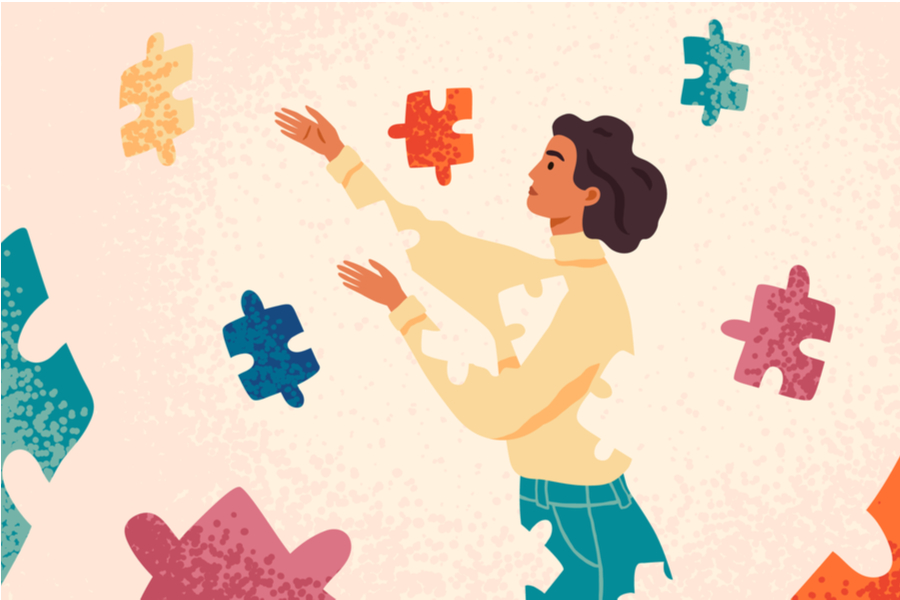Types of therapy: which is right for you?

Feeling overwhelmed with life? Experiencing anxiety? Struggling with your mental health can be scary, especially when you don’t know where to turn or how to begin working on improving yourself. Talking to a trained mental health professional can help. And depending on what you’d like to accomplish during your sessions, there are a variety of different therapies to try…
COGNITIVE BEHAVIOUR THERAPY (CBT)
THE LOW-DOWN: CBT can give your mind an M.O.T, and offers strategies to develop more helpful patterns of cognitive processing.
GOOD TO KNOW: You’ll set goals, join in structured sessions, give time to specific exercises and have homework. Self-discipline is required.
BEST FOR: Learning to recognise and challenge unhelpful thoughts. Six sessions of CBT is usually offered for free on the NHS.
DISADVANTAGES: You may have to wait several months to see someone through your GP, and find that CBT works as a sticking plaster, rather than a treatment of the wound, so it becomes a stepping-stone.
JUNGIAN PSYCHOTHERAPY
THE LOW-DOWN: In this therapy the unconscious is looked to for guidance as to where a client might grow (‘individuate’) and so overcome current challenges.
GOOD TO KNOW: Client and therapist work together to decipher the unconscious, typically through exploring images in dreams, fantasies and memories to shed light on un-lived aspects of your life. Jungians work with the collective unconscious, revealed through patterns found in myths and fairy tales, which point the way for psychic growth.
BEST FOR: This is deep work, usually longer-term, in the hope of becoming a fully whole, rather than perfect, human. It’s a modality focused on transformative growth, rather than just change.
DISADVANTAGES: If you’re sceptical about the significance of dreams or symbols, this will take you out of your comfort zone.
PSYCHOANALYTIC PSYCHODYNAMIC THERAPY
THE LOW-DOWN: Founded by Sigmund Freud, patients undergo a process to increase awareness of inner worlds and the influence they wield.
GOOD TO KNOW: The therapist/patient relationship is crucial. As unconscious patterns – known as ‘transference’ – play out, identifying them offers the opportunity to change.
BEST FOR: Long-term work, with the potential to change deep-seated emotional states and relationship problems.
DISADVANTAGES: Techniques vary. You may have a near-silent therapist aiming to provide a blank canvas. Others position themselves behind you while you lie down, rather than providing warm human interaction.
GESTALT PSYCHOTHERAPY
THE LOW-DOWN: Developed by German-born Fritz Perls, Gestalt focuses on enhanced awareness of sensation, perception and feelings, with emphasis on the relationship between one’s self and the environment.
GOOD TO KNOW: A ‘gestalt’ is a cycle of experience, so this shares territory with drama therapy. You may experiment with expression, moving between chairs to explore and role-play different positions, acting something out, attending to the communication in a physical gesture.
BEST FOR: If you’re open to experimentation, working at your edges and uncovering the unknown offers a chance to work intensively on symptoms and causes.
DISADVANTAGES: Tends to be longer-term work, requiring commitment and money. Not for the faint hearted, it necessitates a willingness to go where you’ve not gone before.
COMBINED COUPLES THERAPY
THE LOW-DOWN: Focused specifically on working with issues which exist between romantic partners.
GOOD TO KNOW: The therapist works on behalf of the relationship, rather than either individual.
BEST FOR: Offers a space in which partners can speak, hear each other and build understanding.
DISADVANTAGES: Often issues which cause friction in romantic relationships stem from childhood relationships and adaptations. It may highlight that either, or both partners, could usefully enter individual therapy.
TRANSPERSONAL INTEGRATIVE PSYCHOTHERAPY
THE LOW-DOWN: Integrative therapists work with the mind, body and soul, and draw on a wide range of theories and ways of working to offer what is most needed.
GOOD TO KNOW: Transpersonal asks what the purpose of a problem is, to find latent qualities waiting to manifest themselves through working with the body, dreams and imagination.
BEST FOR: Aims for transformation rather than change. The integrative element means the therapist is well-placed to meet you wherever you are.
DISADVANTAGES: Again, it takes time and money and requires an openness to a spiritual approach.
PERSON CENTRED THERAPY
THE LOW-DOWN: The therapist holds the client with ‘unconditional positive regard’, believing they are best placed to know what will help them become ‘self-actualised’ – more like themselves.
GOOD TO KNOW: The therapist is likely to be less directive, allowing you to take the lead.
BEST FOR: Providing the environment for you to grow and realise latent potential.
DISADVANTAGES: If you’re seeking advice/direction, you might encounter frustration.
To find out more about therapy and counselling, or search for an accredited therapist in your area, visit theUnited Kingdom Council for Psychotherapy, or British Association for Counselling and Psychotherapy








